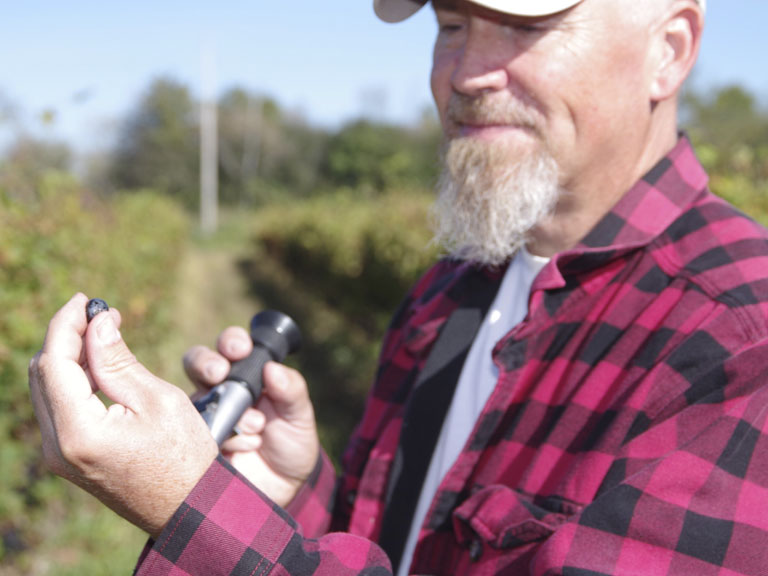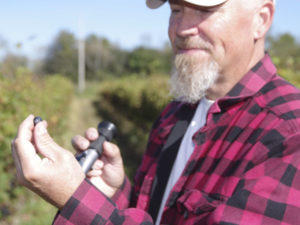County News
Building brix

Recent warm weather a boon to grape growers
The harvest season is just beginning for grape growers across Prince Edward County, and they are all grateful for an unseasonably warm and sunny September that helped push their crops to ripeness. “The last couple of months have been awesome, but we started off cool,” says Rob Peck of Sugarbush Vineyards. “We’re a week late [for harvest] now, but before we had this stretch of warm weather we were a good two weeks behind. Those 30-degree days were awesome.”
In addition to delaying maturity of the grape crop, the cool and wet summer had some other effects. “The rain that we had in June and July didn’t help because it came at flowering, so that affects your crop load,” says Keith Tyers, winemaker at Closson-Chase Vineyards. “Rain just washes the pollen away, so you don’t pollinate. If plants can’t pollinate, you don’t get fruit.” Despite this, yields at Closson- Chase seem to be a bit above expectations, in part because Tyers and his crew didn’t need to thin out the fruit in the early part of the season. Tyers, too, appreciated the warm September. “It definitely helps with physiological ripeness and pushing the plant to generate sugar. Being warm and dry definitely had its benefits,” he says.

Chris Karja prepares to check the sugar level, or brix, of a cabernet sauvignon grape in his vineyard.
While the warm September weather was helpful, the cool autumn nights meant there was good deal of morning fog. “Typically around harvest time, you don’t want to see that,” says Peck. “Because with those high humidity levels, it really encourages mildew growth and we worry about bunch rot. So we spray some organic sprays that we can put on at the end of the season and still harvest the next day, to make sure the bunches are going to stay healthy.”
Chris Karja of Gravel Hill Winery calls mildew the Achilles’ heel of grapes, and has been using organic sprays to keep the problem under control. He and his wife, Michelle, operate the small winery, which started commercial production last year with a run of 500 cases. The September heat has helped his crop to ripen, but he is still a bit cautious as he has some Frontenac blanc grapes that need a few more weeks on the vine so that he can use them for a white port. “You’re not going to get the same kind of ripeness that we got last year,” he says. “The phenolic ripeness is going to be different from last year to this year. And that’s what makes it interesting for small wineries.”
This is a vulnerable time of year for the grapes as they approach maturity and their skins begin to soften, raising the possibility of botrytis—especially in high moisture conditions. “Mother Nature is what Mother Nature is, and you have to learn to adapt,” says Tyers. “But the fruit looks good, seeds look good.” Tyers hesitates a bit when asked about how this year’s wine might turn out. “This vintage is very similar to 09,” he says. “O-nine chards and pinots are drinking beautifully now, eight years later. It’s going to be a vintage that’s slightly more feminine in style. It’s going to be lifted in terms of fruit aromatics and floral aromatics. That’s speculation right now, and one thing we should never do is speculate about how a vintage is going to be.”

Comments (0)